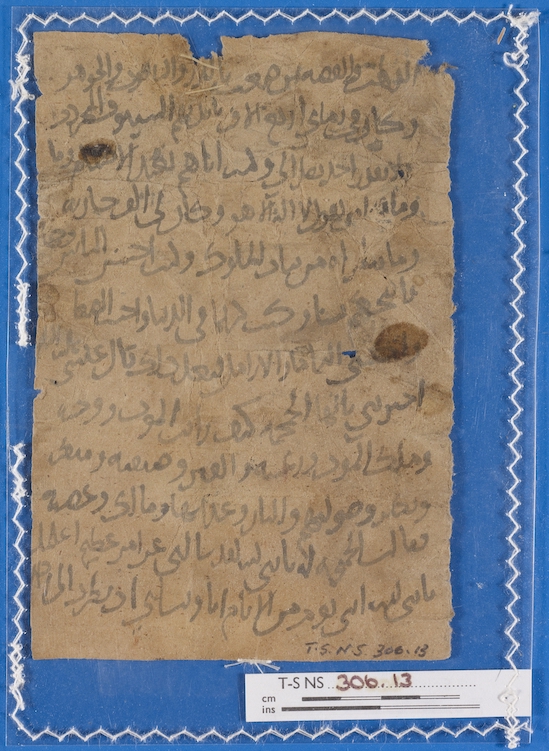Q&A Wednesday: Talking skulls with Magdalen Connolly

Magdalen - which manuscript are you working on today?
This morning I’m working on fragments from the T-S NS 305 and NS 306 sections of the collection, which contain mainly Arabic-script material of a wide variety of genres. In particular, I’ve been looking at an Arabic-script fragment (T-S NS 306.13), which contains part of Qiṣṣat al-Jumjuma (‘The Story of the Skull’). This story is found fairly frequently in the Cairo Genizah collections in Judaeo-Arabic (e.g., T-S Ar.37.39 and JTS ENA 1275.5, 12, 13, ENA 2700.48, and ENA 3239.34). This fragment is particularly interesting as the main protagonist (besides the skull) is referred to as Jesus, like in the Muslim and Christian versions of the tale (from other sources). In the Judaeo-Arabic versions I have seen, this character is referred to simply as ‘that man’.
What happens in the Story of the Skull?
It’s a story about a man/Jesus who encounters a skull lying on the ground (often as he is walking through the wilderness in al-Šām). He asks God to allow the skull to speak to him, a request which God grants. He then asks the skull a series of questions about the manner of his life and death, which the skull answers in great detail. Depending on the version, the skull was a great Sultan, who lost his way and began to worship idols rather than God. He then tells the details of his unpleasant death, and descent into hell, his interaction with the angels of death, Munkar and Nakīr, and his resurrection.
Do we know how old this story is, and how old the fragment might be?
So, the origins are a little unclear - there is no trace of the story in Pre-Islamic poetry or the Qur’an, but Roberto Tottoli (2003) attributes the development in the tale’s literary content to the popularity of the Persian poet Farīd al-Dīn ʿAṭṭār’s (d. ca. 1221 CE) tale jumjuma nāma. Most of the versions of the tale that survive today date between the 16th and 19th centuries. It was very popular in both the Islamic and Christian traditions. The dating of this particular fragment would be very hard, as all we really have to go on is the palaeography and limited codicological information (such as the paper-type). It probably dates to the early modern period, but that is as specific as I can be!
Do we know who was reading this Arabic-script tale? And finally, are there many of these Arabic fairy tales preserved in the Genizah?
Given that there are quite a few Judaeo-Arabic versions of the tale in the Cairo Genizah collections, it may be safe to assume that at least some members of Cairo’s Jewish community were reading the tale in Arabic script as well. T-S Arabic (Ar.), New Series (NS), and Additional Series (AS) contain vast quantities of Arabic-script material and there are some tales and legends among the fragments, there. There are also a fair number of fragments of poetry. In the NS 305 alone there are six fragments of Arabic poetry, which contain extracts from famous poets, such as Al-Būṣīrī, Al-Mutanabbī, and Abū Firās Al-Ḥamdānī. This suggests that at least some section of the Cairene Jewish community was engaging with these literary works.
Thanks very much Magdalen!

Comments
It is good. I think the hand
It is good. I think the hand of TS NS 306.13 is earlier than we might think. I would have guessed 13th century the latest. It looks like other documents from this period.
Also, sculls are heroes of some Talmudic stories, but I don't recall them speaking...
Add new comment